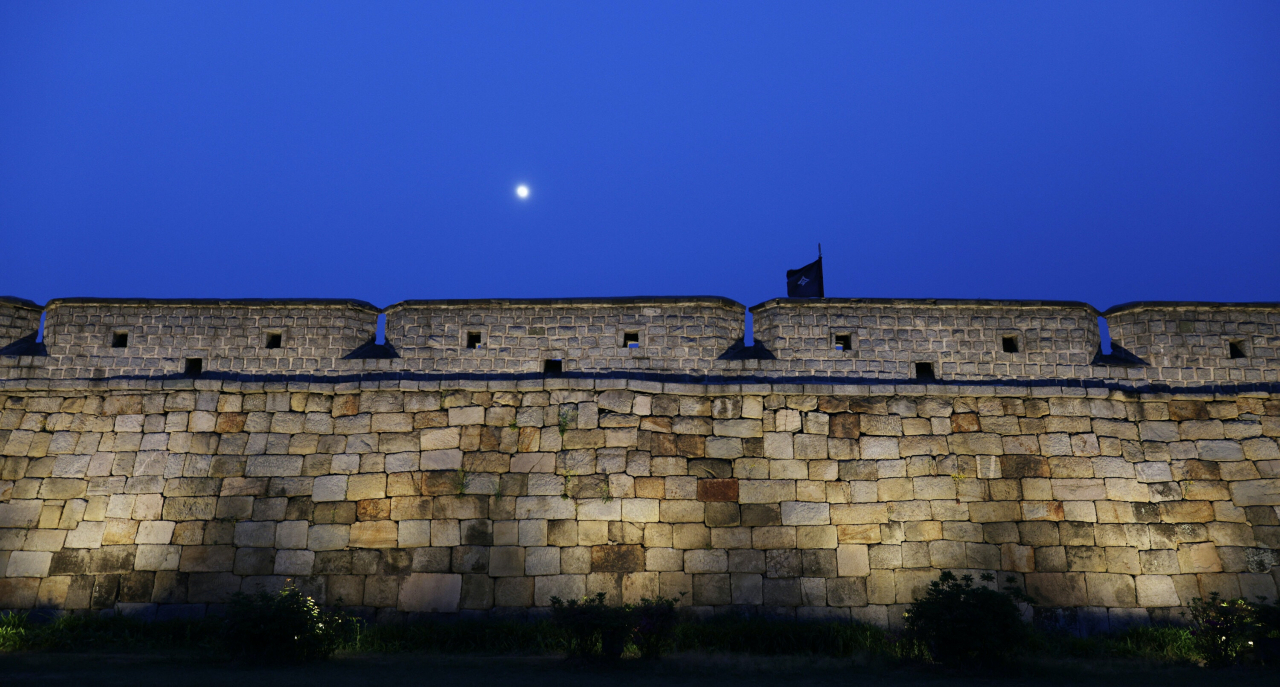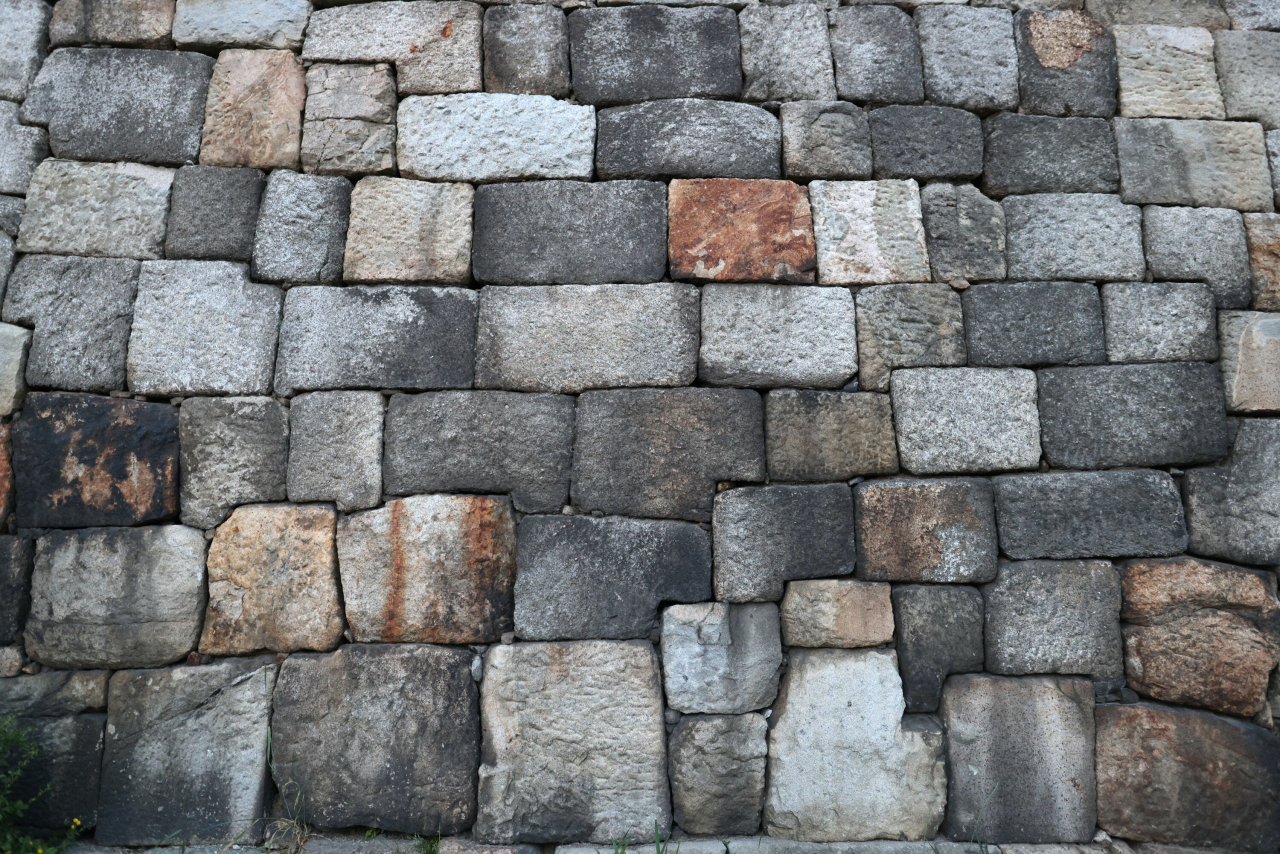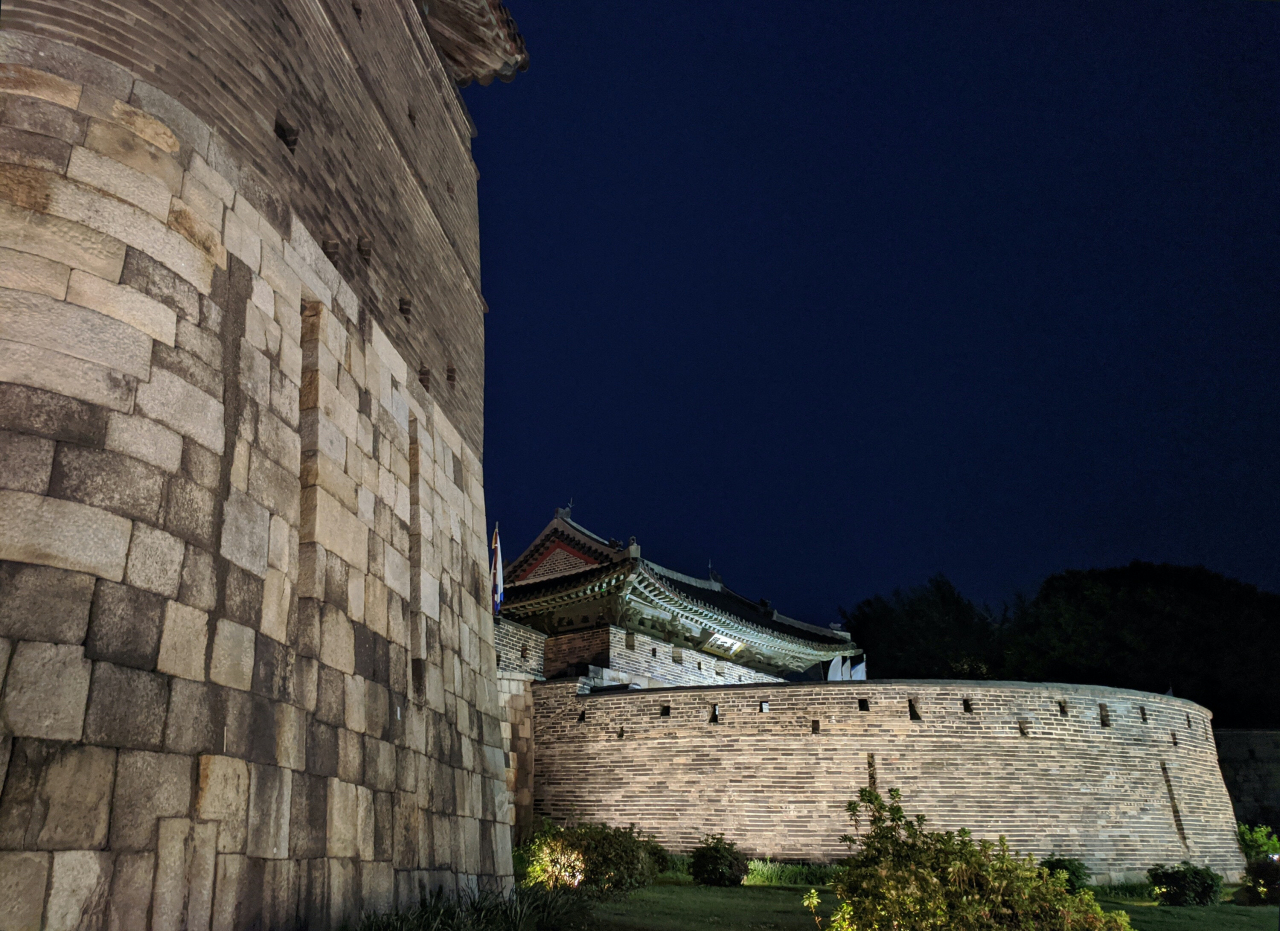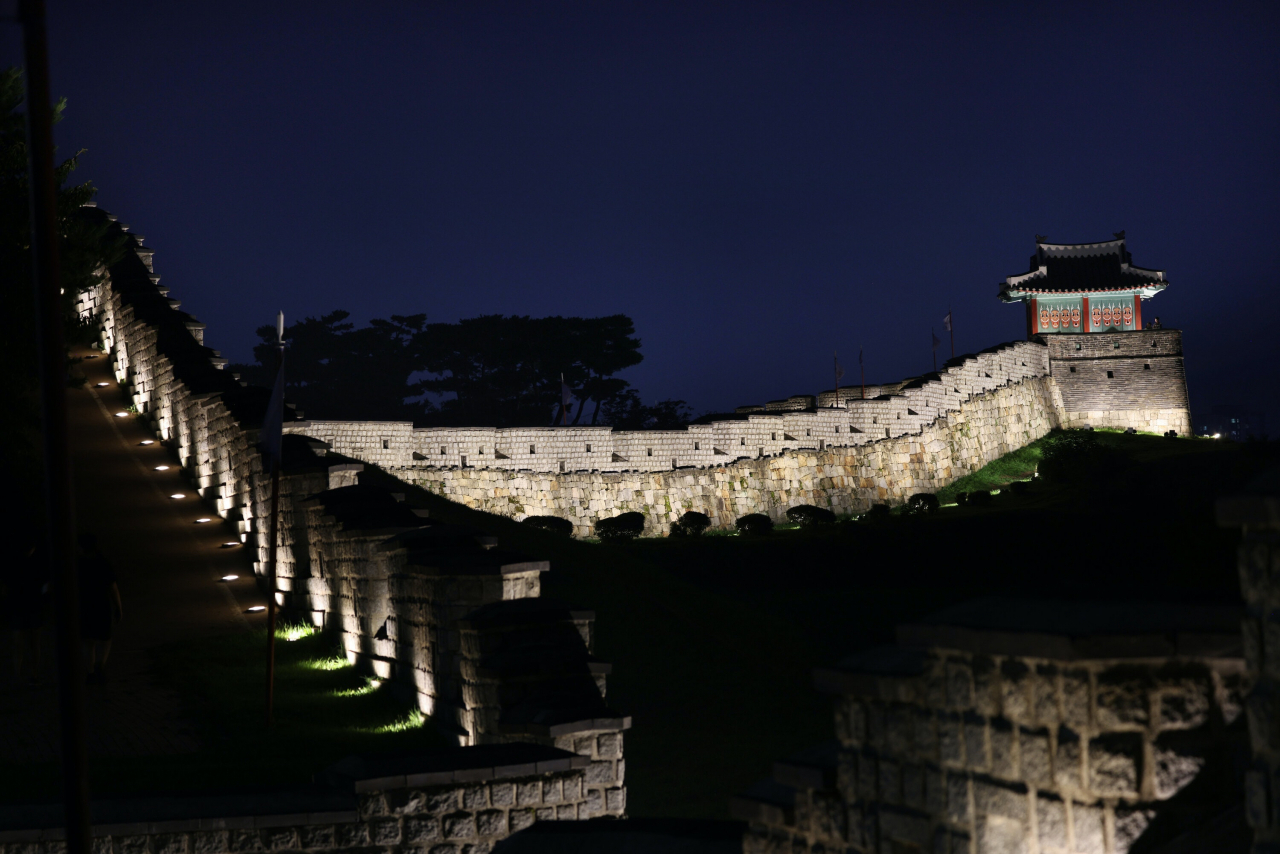[Visual History of Korea] King Jeongjo the Greats formidable Hwaseong Fortress
By Korea HeraldPublished : Sept. 3, 2022 - 16:01

In 1776, while the American Revolutionary War was raging in North America, 23-year-old King Jeongjo of the Joseon Kingdom who started his reign of the “yeomin” policy, "the monarch being with the people."
King Jeongjo the Great (1752 -1800) was a benevolent reformer who provided employment to 700,000 common people with good wages and excellent benefits while building his prized project, the Suwon Hwaseong Fortress.
The Hwaseong Fortress, which is 5.74 kilometers long and located in the city of Suwon, within 100 li (40 kilometers) of the capital Seoul, was built from 1794 to 1796 under the reign of King Jeongjo the Great with a paid labor force, unlike other previous national projects which mandated forced labor.
While King Jeongjo's justification for building the fortress was for national defense, King Jeongjo benefited from the creation of his own private army called "Jangyongyeong" and an alternate satellite city with a marketplace to chip away at the monopoly on national commerce held by his political foe in the capital city Hanyang (present day Seoul).
Additionally, King Jeongjo built a 576-room retreat palace named Hwaseong Haenggung inside the Hwaseong Fortress where he stayed 13 times in 12 years during Jeongjo's reign, when he visited the Hyeonryungwon, the tomb of his father, Crown Prince Sado, near the fortress with his 6,000-person royal entourage.
The Hwaseong Fortress was designed to fend off enemy attacks with no blind spots around the entire 5.74 kilometer perimeter with openings for cannons, rifles, archery and even holes to splash water over the gates to extinguish fires set by the enemy.

The fortress wall is built with Korea's abundant granite stones with razor thin gaps between them and bricks at places designed to withstand enemy cannon shots with minimum surface damage.
King Jeongjo grew up with the traumas of having witnessed his grandfather King Yeongjo (1694 - 1776) killing his son to save his grandson.
The future King Jeongjo's father was named the Crown Prince Sado (1735 - 1762) posthumously by King Yeongjo. Sado means to think of sadness.
Politics was a blood sport in Korean history. Up to four dominant factions within the Joseon Kingdom's top-heavy politicians endlessly competed for naming rights of the Joseon kings from their respective sides by marriages and/or by political coercion.
King Jeongjo's grandfather King Yeongjo rose to the throne following the untimely death of his half-brother and 20th king of Joseon, King Gyeongjong (1688 – 1724), after four years and four months on the throne.
The tragedy of King Gyeongjong includes his mother being ordered to death by poison by his father, the 19th Joseon King Sukjong (1661 - 1720). King Sukjong ordered her death for using black magic and sorcery which led to the death of his wife Queen Inhyeon (1667 - 1701). Hundreds of people implicated in the accusations were also executed or sent into exile.
Noron, one of the neo-Confucian political factions of Joseon, controlled the country for more than a century by monopolizing their iron grip on the kingdom's commerce and the military, not to mention a sheer number of politicians in the royal palace.
“Even when the politicians met with the king, they did not bow down, and they were not afraid of making noise when they walked around," documented the future King Jeongjo in his journal.
Under powerful political factions constantly raising conspiracy theories in the royal court, King Yeongjo’s ability to shield his son the Crown Prince Sado so he could ascend to the throne to become the next king turned unsustainable.
It didn't help that the Crown Prince Sado -- who was educated starting at age two when he was named the Crown Prince and performed the role of the substitute king from age 15 -- became too fatigued with intensive education and rigid court duties. He preferred engaging in artistic pursuits such as painting, rather than being educated in the classics.

Perhaps to defend himself, Crown Prince Sado trained himself in combat and military skills, often riding horses inside the palace grounds while engaged in martial arts training. He authored a military training textbook titled "Muyesinbo" in 1759 which his son King Jeongjo the Great later republished with additional horseback combat training guides.
King Yeongjo's 52-year reign, the longest in Joseon's history, was riddled with multiple crises of princes and court concubines dying under mysterious circumstances.
King Yeongjo was not impressed with his son the Crown Prince Sado playing with weapons and his horseback training in the Changgyeonggung Royal Palace.
As chronicled in the 2015 movie "The Throne," when the Crown Prince Sado was accused of treason, not even the king could protect his own son.
“If you’re not able to read a difficult Hanja character or if your ankle strap is not perfectly tied, they will make fun of you,” King Yeongjo tells his son in the movie.
The only honorable way to resolve the treason accusations was to have the Crown Prince kill himself but when political factions which was pulling for the Crown Prince would not let that happen, King Yeongjo ordered the Crown Prince to be locked inside a dwiju, a wooden rice chamber and left to die of starvation which took nine days and nights.
When the boy prince who the Grandpa King Yeongjo adored became the king at age 23 in 1776, one of the first things King Jeongjo declared was: "I am the son of the Crown Prince Sado." This was followed by three attempted assassinations, with assassins entering King Jeongjo's private quarters during the first year of his reign.
When King Jeongjo paid all of the 700,000 workers, the news got out, and there was no shortage of motivated workers who finished the Hwaseong Fortress in under three years, which was supposed to take more than 10 years to build.

According to Lee You-na, a researcher at the Suwon Hwaseong Museum, there were 1,821 specialists in 22 occupations included in the 700,000 workers constructing the Hwaseong Fortress.
During King Jeongjo's famous 13 processions consisting of a 6,000-member royal court entourage to visit his father's tomb, the general public celebrated King Jeongjo's yeomin policy of the king being with the people. The reformer king listened to people's pleas all along the 100 li (40 kilometers) procession that lasted three days each way.
Nobody during the Joseon era could be critical of anyone visiting ancestors' graves.
King Jeongjo the Great had the last laugh with Joseon Kingdom's finest warriors from his awesome 5,000-strong private army escorting the Great King wearing gold-laden armor on horseback for all to see.
By Hyungwon Kang (hyungwonkang@gmail.com)
--
Korean American photojournalist and columnist Hyungwon Kang is currently documenting Korean history and culture in images and words for future generations. -- Ed.
-
Articles by Korea Herald





![[From the Scene] Monks, Buddhists hail return of remains of Buddhas](http://res.heraldm.com/phpwas/restmb_idxmake.php?idx=644&simg=/content/image/2024/04/19/20240419050617_0.jpg&u=20240419175937)





![[Graphic News] French bulldog most popular breed in US, Maltese most popular in Korea](http://res.heraldm.com/phpwas/restmb_idxmake.php?idx=644&simg=/content/image/2024/04/18/20240418050864_0.gif&u=)



![[From the Scene] Monks, Buddhists hail return of remains of Buddhas](http://res.heraldm.com/phpwas/restmb_idxmake.php?idx=652&simg=/content/image/2024/04/19/20240419050617_0.jpg&u=20240419175937)

![[KH Explains] Hyundai's full hybrid edge to pay off amid slow transition to pure EVs](http://res.heraldm.com/phpwas/restmb_idxmake.php?idx=652&simg=/content/image/2024/04/18/20240418050645_0.jpg&u=20240419100350)

![[Today’s K-pop] Illit drops debut single remix](http://res.heraldm.com/phpwas/restmb_idxmake.php?idx=642&simg=/content/image/2024/04/19/20240419050612_0.jpg&u=)